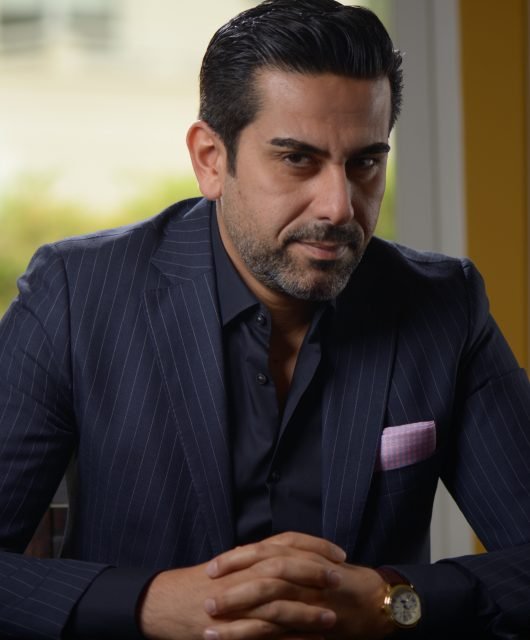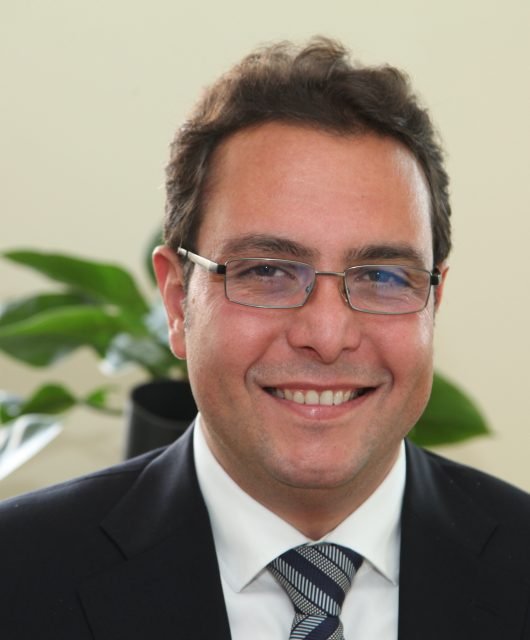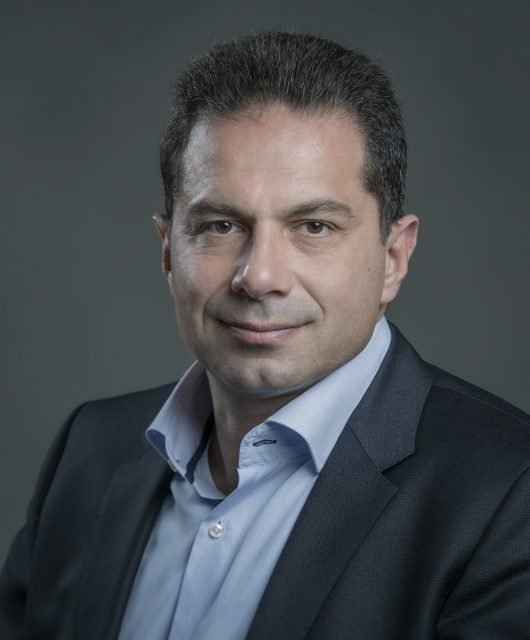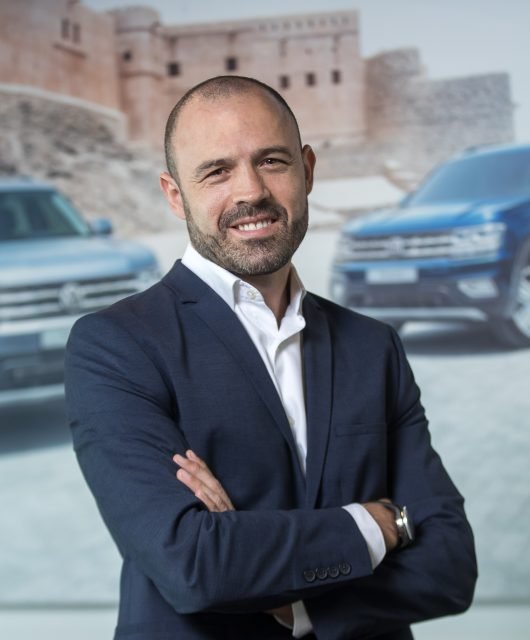Brand and product launch has been one of the most controversially challenging subjects in the branding landscape. Should brands be launched through traditional TVCs, widely circulated press releases or can digital media play an integral role in the scene. The Berries interviewed Simeon Simeonov, Digital Marketing Manager for The Middle East Zone at Schneider Electric, to get more insights.
 BB: Social media has become one of the most cost-effective and powerful channels for communication. Does launching brands on social media help in widening brand exposure more than any other conventional communication medium ?
BB: Social media has become one of the most cost-effective and powerful channels for communication. Does launching brands on social media help in widening brand exposure more than any other conventional communication medium ?
SS: I believe B2B companies had an easier time to measure the efficiency of social media all along. While consumer brands jumped quickly on the social media band wagon many of them had to believe to some extent that it brings value, even though it was harder to attribute its influence on the sales. The forward thinking B2B companies had developed elaborate marketing efficiency measurement systems that gave the comfort of attribution early on. In Schneider Electric we are obsessed with measurement of marketing efficiency so it was never complicated to decide to which extent we should invest in Social Media, to achieve our goals. In our measurement model we can see the contribution of almost each marketing activity and decide based on the result if it makes sense to repeat it. This gives us the comfort to test a lot, fail fast and learn from our mistakes.
In addition to that we are using tools to measure our Share of Voice in Social Media, electronic publishers and print relative to the market and competition. This gives us pretty good feeling of how much exposure we gain.
Over time the social media landscape changed a lot. In previous years we were betting mostly on sharing valuable content in social media and looking for organic reach and engagement. Over time algorithms of the various social networks changed and we saw the decline and even lately the proclaimed “death of organic reach”. We had to change our tactics to sustain – so we started gradually to adopt more social media advertising. I must admit the social media networks got more and more sophisticated in their advertising options – which gave us the ability to be very targeted when reaching to our prospective audiences. This obviously led to bigger share of our communication through social media.
BB: The engaging nature of social media empowers companies with the perfect opportunity to measure effectiveness, fine-tune and adjust their brand launch strategy in line with online audience feedback. How can brands leverage the use of big data via social media for a better brand launch strategy?
SS: For me the biggest challenge is to make sense of the “big data” and the “small data” at the same time. After the change in organic social media reach – now we have 2 main uses of social media. Advertise and get the big targeted reach – get deep into the analysis of engagement per targets and interest to increase efficiency on large scale. But at the same time – be conscious about the 1 to 1 communication – and make sure that social media is open for the users as an easy access support channel. This provides great learning opportunities for the company on micro level. It sounds easier than it actually is, but whoever gets both right will win in the long run.
BB: One of the most challenges brands face on social media upon launch is “the leak” or “teasers”. How can social media teasers stimulate and pull the attention of the audience and at the same time stay intriguing and not reveal too much?
SS: We are using this approach a lot in our content marketing. By deploying a “big rock” content on our website and use the so called “turkey slices” – bits of interesting highlights to share in social media and drive the attention to our main piece of content. It’s all about careful planning – we are having quarterly editorial calendars which are approved before the period starts. These documents are detailed listing of all social media posts we will do during the quarter. In addition we have a clear media plan – what is going to be boosted, which ads will support our messaging. This allows us to unfold a story little by little and not be in a rush to figure out what to say. Of course we take into account reality and we are able to incorporate ad hoc requests if needed, but it is preferably miniscule part of what we have to communicate during the period addressed.
For example now we are working on a large scale event called Innovation Summit in Dubai on 11th and 12th April 2017. We will host top industry leaders from across the region to discuss the latest technologies, trends and innovations, transforming the world of energy at Atlantis The Palm, Dubai. We rely a lot on social media as one of the main drivers to reach the right audience and bring to them the Innovation story. So we built a communication plan to help us educate our audience on the megatrends driving the industry, the need of innovation and how we contribute, and finally bring the right prospects to register to the event.
BB: Can you mention some of the breakthrough tactics for launching a brand/product using social media ?
SS: We rarely advertise and communicate to general public because majority of our products aren’t meant for end consumers. We strive to be very targeted in our communication through social media and be able to reach prospective customers. That’s why we rely a lot on our owned media and sophisticated targeting to ensure efficiency. We keep our website at the heart of our digital communication and it accompanies our customers throughout their journey. We spend a lot of time on developing the right content to drive interested prospects to us. Once on the website we are adding them to our interactive audiences for social media and trying to obtain more information about them e.g. contacts, interests etc. Having this in place we rely a lot on retargeting and remarketing of our existing data. Through social media we are able to make a sort of second layer of marketing automation that accompanies our prospects through the various phases of buying lifecycle. Here is a simple scenario how that would play out: Someone finds interesting content on our site from Google, social media or through our advertising activities, once the visit on our website is done we start following them with an additional piece of content through social and digital advertising. And if the user is interested in the next steps we continue nurturing them with additional information to help them find the right solution. With such an approach we are able to significantly lower our cost per Marketing Qualified Lead. It’s not our invention but it’s a robust methodology, which works quite well for us.
BB: Has the rise of online influencers helped brands in developing viral brand launches with quick momentum?
SS: At Schneider Electric we are just dipping our toes in influencer’s subject as it is a bit more complicated to find a suitable influencers pool in our field. Still we have widely recognized internal speakers for example our CEO Jean-Pascal Tricoire who are among the thought leaders in the field of energy with notable participations in forums like Davos, COP-21 and important regional events like World Future Energy Summit. When it comes to Corporate Social Responsibility – a field very close to the core values of our company – we supported the HeForShe a UN initiative to promote gender equality around the world. One of the faces of the campaign is Emma Watson – young talented actress with strong position on women rights. She was also part of our campaign assets to promote the cause.
I can say that based on our experience so far we see a big potential in using more influencers into our communication, and it’s a subject we work on.
BB: Social media might impose a threat on brands and products with highly confidential product details for companies operating in different industries such as tech companies. How can these companies overcome such a hurdle and use social media for brand/ product launch?
SS: Marketing communication in general and social media in particular, due to its viral nature are always both great potential and a threat. But from my prospective it’s like driving a car. As long as everyone obeys traffic laws we are fairly safe. For our social media communication – we have very clear governance on the messages we share with our community. It has 3 levels – first there is a clear internal guideline about what, how, where and when we communicate. In addition to that when it comes to who – we allow only social media trained people to work on our corporate accounts to mitigate the risk. And finally we provide to our employees who are willing to endorse and share Schneider Electric messages in social media a guideline for using personal accounts for professional purposes. It has a lot to do with ethics and professional attitude e.g. make clear from the start the relation to the company when communicating.
If rules are clear it helps a lot to the internal stakeholders to take efficient swift decisions about the messages we would like to share.





